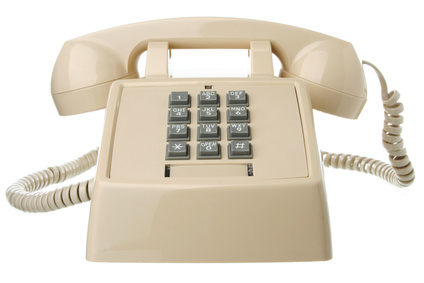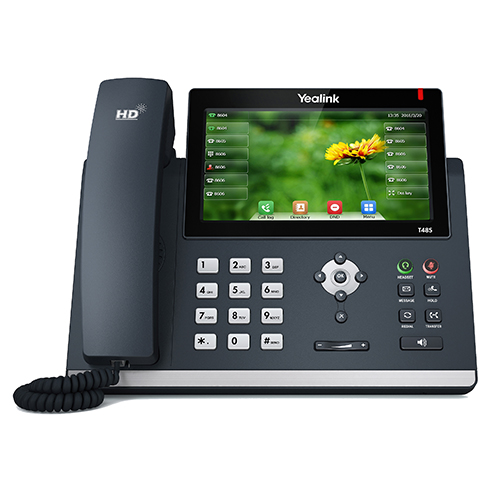Centrex and VoIP – what are the similarities and differences between these two business telephone technologies?
Telephone companies initially offered Centrex as a way for businesses and government agencies to access a complete set of telephone system features without purchasing and maintaining an in-house telephone switch (called a PBX). Centrex was attractive to organizations that wanted a minimal capital outlay and needed ongoing system maintenance included in a predictable monthly price.
There was no comparison shopping for companies looking for this type of service. The vendor was “the telephone company.”
The telephone company’s local central office (CO for short) served physical connections and system features. A CO was and still is a nondescript and often windowless building located somewhere in each town. Here is what some of the central office buildings in the 916 area code look like.
Centrex service delivered and still delivers a dial tone to each employee via a pair of copper wires connected to a single-line telephone. The first-generation single-line phones had no display and no feature buttons. They were like the phones you could find in someone’s house. Some had a message waiting light and a recall button added on.
Centrex features included, among others:
- Station to Station Dialing
- Consultation Hold
- Three Way Calling
- Call Waiting
- Call Transfer
- Call Forwarding
Feature activation required a hook flash — tapping the hook switch to disconnect the loop current for about half a second. Too fast — nothing happened. Too slow — the call was disconnected. Codes had to be keyed into the dial pad to activate features. For example, a sequence of hook flash plus keying in *99 may have been required for answering an incoming call when the user was already on a call.
Over time, the concept of a single line phone became more evolved. An electronic hook flash button was added. Programmable buttons could take the place of keying in feature codes. But at its core, an electronic Centrex phone was still a single line phone.
Centrex relies on what has come to be considered a legacy infrastructure, the Public Switched Telephone Network or PSTN. In Central Offices, calls are still physically switched to make caller to caller connections. In the early days, calls were switched by a human at a patch panel. Later, calls became electro-mechanically switched. Today, calls are digitally switched on printed circuit boards.
However, “switched” still means that moving parts are involved. Moving parts means required hardware maintenance.
Centrex Disadvantages
The main disadvantages to Centrex from a business or government agency perspective are:
- It’s relatively expensive
- No new features are being added
- Feature access on a phone can be non-intuitive and cumbersome for users
- If there’s a phone display, its options are limited
- There are no secondary device access options, such as via a smartphone
- There’s no customer controlled administrative interface
- Centrex appears to be in the process of being phased out
As legacy infrastructure, the PSTN is separate from the internet. It does not have the economies of scale of the internet.
Enter Business VoIP
What Centrex and VoIP have in common is that they are both hosted services that have a predictable contract rate. They both carry voice traffic. But that’s where the similarities end.

As its name implies, Voice over Internet Protocol or VoIP, is voice that travels over the internet.
A phone system user’s voice is converted from analog to digital within their VoIP phone. The voice they hear has been converted from digital to analog inside the phone. Voice signals travel back and forth through the local network and the internet just as any other data signal does.
VoIP and Centrex Differences
Here are some of the key differences between Centrex and VoIP.
– Unlike Centrex, there’s no physical switching involved with VoIP. All connections are software controlled.
– The VoIP “back end” is a modern data center, not a fifty to one hundred year old Central Office building.
– With VoIP, new features and functionality can be continuously developed and deployed by the writing of lines of software code.
– Unlike with Centrex, no feature codes need to be keyed in on VoIP phones. Telephone features are button and menu controlled. Soft keys mean that buttons can take on different functions, depending on the current context.
– Because VoIP is internet based, telephone service can also be accessed via a computer desktop, a tablet or a mobile phone.
On the supplier side, there are low barriers to vendor entry into the VoIP business. That’s why Fortis, a local Sacramento area business, was able to become a VoIP vendor in 2010 and introduce personalized service into a industry that continues to suffer from a lack of personalization.
Here’s a summary of the benefits of VoIP compared to Centrex:
- VoIP is less expensive than Centrex
- New features are continually added by VoIP vendors
- A VoIP phone provides access to these features
- Calls can be made and received on multiple types of devices
- The “telephone company” is no longer the sole vendor option
- An administrative dashboard is available via a web browser
- A user dashboard is available via a web browser
For these and other reasons, as Centrex contracts have come to an end, many organizations have moved from Centrex to VoIP service. Many more are planning to make the move when their Centrex contracts end.
The telephone companies are not discouraging this move. As the newer generation of telephone service vendor have done, the telephone companies need to continue their move to an internet based, software controlled set of services.

